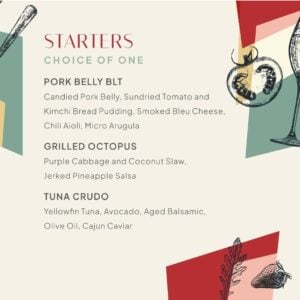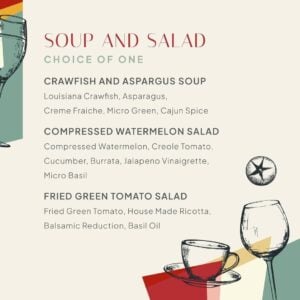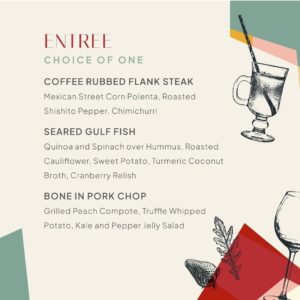Studies show that consumers generally perceive locally grown food as higher quality and more nutritious. There’s plenty of truth to that. By purchasing produce from local growers, you can leverage the prime seasonal times of different foods. Whether seasonal seasonings, fruits or vegetables, consuming locally harvested in-season ingredients is an excellent way to:
- Support your local farmers and community.
- Reap optimal vitamins, minerals and nutrients.
- Avoid harmful chemicals, preservatives and pesticides.
- Enjoy peak ripeness and delicious flavors.
In this complete guide to seasonal ingredients, you’ll learn about natural growing and harvesting cycles, examples of seasonal crops and the benefits of choosing locally grown foods. Afterward, you may just feel inspired to swing by a local farmers’ market, buy directly from a local farm or visit a restaurant with seasonal, locally sourced menu items.
What Is Seasonal Food?
Seasonal food describes produce purchased and consumed at optimal harvesting time, freshness and flavor. It’s typically best to eat right after it’s harvested, though there are a few exceptions. For instance, sweet potatoes are best enjoyed one to three weeks after harvest. This allows the starches plenty of time to convert to sugars and achieve a well-rounded flavor.
Here are some examples of seasonal foods:
- Fall: Apples, pumpkins, cranberries, pomegranates, figs, grapes, butternut squash and potatoes are all staples during fall.
- Winter: Kiwis, grapefruit, citrus fruits, pears, kale, spinach and Brussels sprouts are best enjoyed during the cold-weather season.
- Spring: Some prime fruits and veggies for spring are avocados, apricots, pineapples, mangos, rhubarb, strawberries, asparagus and artichokes.
- Summer: The best produce for summer includes blueberries, blackberries, peaches, plums, nectarines, watermelon, tomatoes, cucumbers, green beans and zucchini.
Why Should You Eat Food That Is In-Season?

Research shows that the fresher the produce, the healthier it is. When you consume fruits and vegetables shortly after harvesting, you receive more minerals, vitamins and antioxidants — all of which offer a host of health benefits:
- Stronger bones and teeth
- Better immunity
- Hormone regulation
- Higher energy levels
- Healthier hair and skin
Compared to out-of-season produce that has sat on grocery store shelves for extended periods, fresh produce has a richer, fuller flavor and is significantly more nutritious. Seasonal produce from local farms is usually fresher since it hasn’t traveled a long distance. To that end, the best time to eat fruits and vegetables is when they can be purchased from a local farmer shortly after harvest.
The Natural Growing Cycles
Every food has its own peak growing and harvesting time. Harvest times vary depending on several factors, like:
- The type of plant and its germination cycle.
- Soil fertility.
- Temperature.
- Precipitation.
- How long it takes the crop to mature.
Ripe times vary with different crops. For example, tomatoes can sit on the vine until fully or partially ripened. Meanwhile, produce like watermelon and squash aren’t typically ready for picking until they’ve completely developed.
By understanding foods’ growing cycles, we can determine the best practices for seasonal eating. Here are the natural growing cycles that occur during different seasons.
1. Spring
Spring is the time for cool-season crops. These plants can withstand chillier temperatures and germinate in colder soil. Here are some examples:
- Lettuce
- Chives
- Scallions
- Radishes
- Spinach
- Asparagus
- Rhubarb
- Kale
2. Summer
Warm-season crops are sensitive to cold temperatures and frost. They thrive in warmer environments. Some examples include the following:
- Cucumbers
- Melons
- Eggplants
- Summer squash
- Tomatoes
- Corn
3. Fall
Fall and end-of-summer crops are harvested for storage. Some examples include potatoes, onions, root vegetables and winter squash.
Keep in mind that this is a general guide for areas with four distinct seasons. These cycles often occur earlier in warmer climates.
Regardless of the season, nearly all produce is best when harvested during the early morning. They spend the night regaining moisture lost during the day. Additionally, starches that develop during the day can convert to sugars overnight. Harvesting fruits and vegetables in the morning can yield crisper, juicier and more flavorful products. If you can’t harvest until later in the day, try to keep produce out of direct sunlight to reduce degradation.
The Importance of Eating Locally
Aside from richer flavors and health benefits, choosing locally grown seasonal foods has many other benefits.
1. You Know More About the Products You’re Purchasing
When you buy produce from farmers in your area, you can ask about their raising and harvesting methods. They can tell you exactly how the food was grown. Knowing where your food comes from and who grew it can give you more peace of mind in your purchase.
2. Products Are Safer for Consumption
Between harvesting, washing, shipping, distribution and other processes, imported foods pass through many hands. As a result, they’re more prone to contamination than their local counterparts. Because locally grown food doesn’t require long trips, it’s free of the chemicals and preservatives used to keep products fresh during transit.
Local foods are often free of pesticides, as well. Many large-scale agricultural facilities mass-spray their products with harmful pesticides. Meanwhile, local food producers typically use natural and organic pest repellants to preserve food quality. Local foods are particularly ideal for those sensitive to hormones, preservatives and other chemicals.
3. You Help the Environment
Purchasing local foods cuts down on carbon dioxide emissions during food transportation. On that account, you can positively impact the environment by going local.
4. You Support Your Community and Economy
Buying local ingredients helps support farmers and maintain farmland in your community. Money that goes to local growers and farmers is often reinvested in your community’s businesses and services.
Additionally, food that is locally grown, processed and distributed to other businesses — such as restaurants — can create jobs, thus boosting local economies. Restaurants should also leverage optimal growing periods by adding more locally grown foods to their menus. That way, they can also support their local farmers and help their customers access the benefits of seasonal food.
Make a Reservation at Tallulah Crafted Food and Wine Bar!
Seeking out the freshest ingredients is key in reaping the peak harvesting season of foods. Visiting local farmers’ markets — and restaurants that use their products — is a great way to take advantage of the freshest, tastiest items.
When you reserve a table at Tallulah Crafted Food and Wine Bar in Baton Rouge, you can indulge in a variety of seasonal ingredients. Our extensive menu contains only the freshest meats, poultry, seafood, produce and herbs, giving you the highest-quality flavors year-round. You can also dine in the comfort of our beautiful outdoor terrace to enrich your experience further.
We have a table with your name on it. Come enjoy a delicious meal made with the freshest ingredients. Contact us to snag your reservation today. We look forward to serving you!









